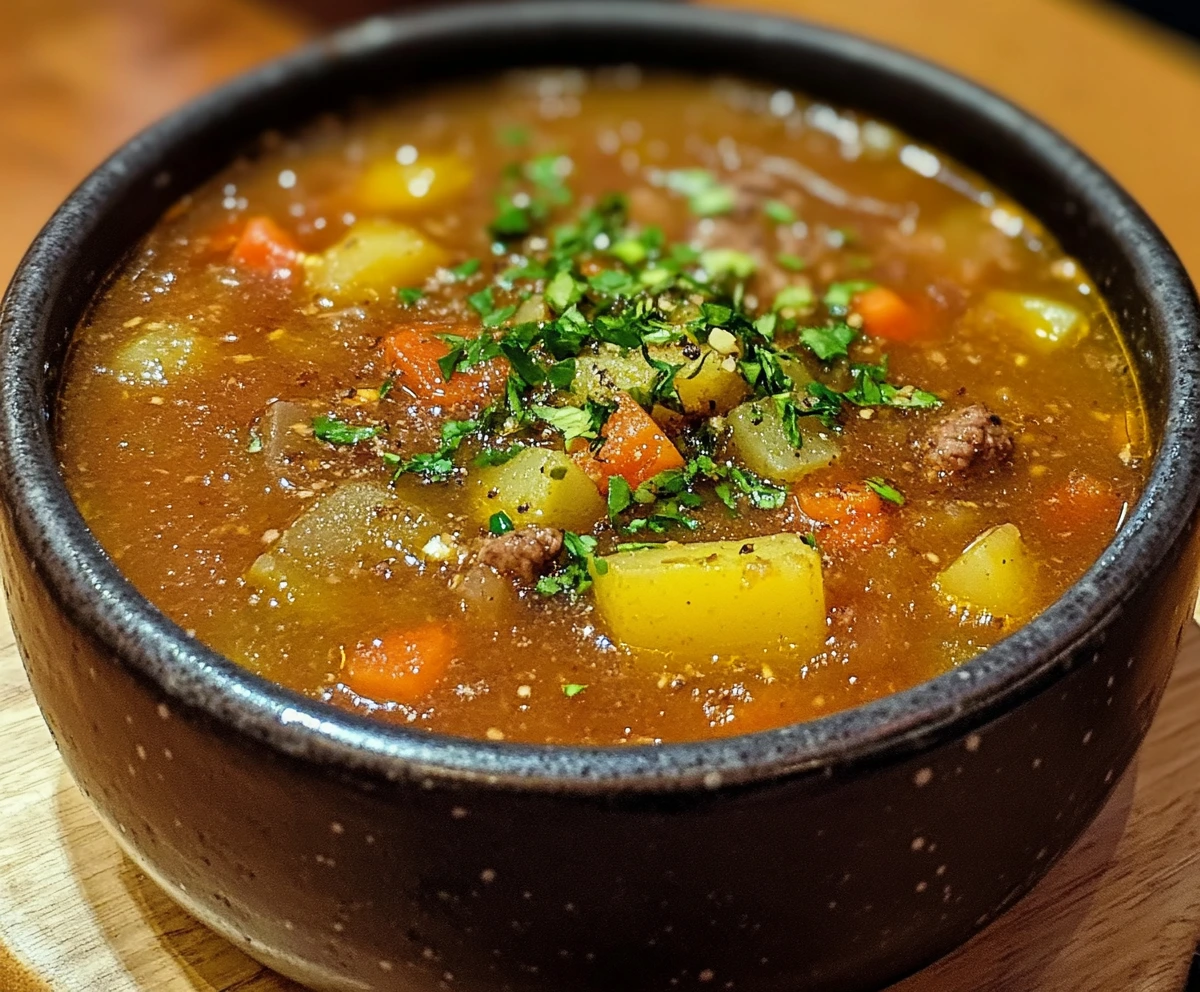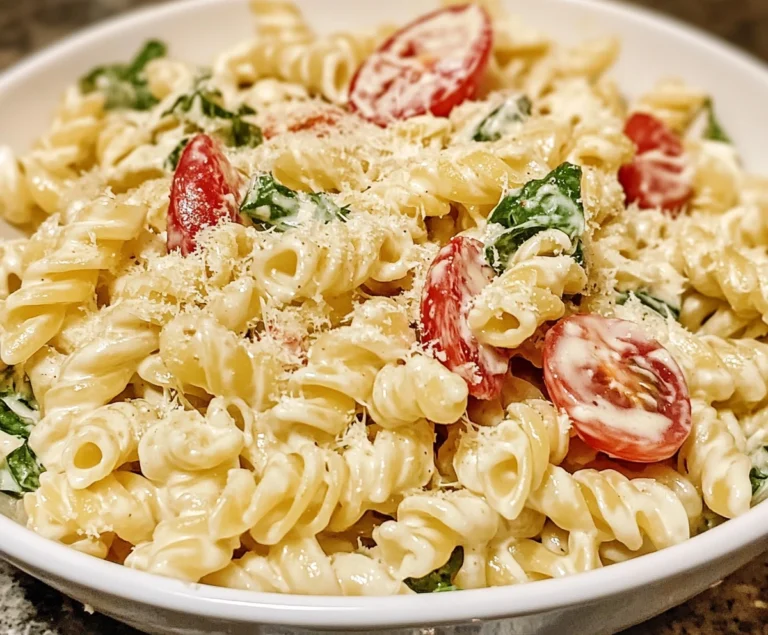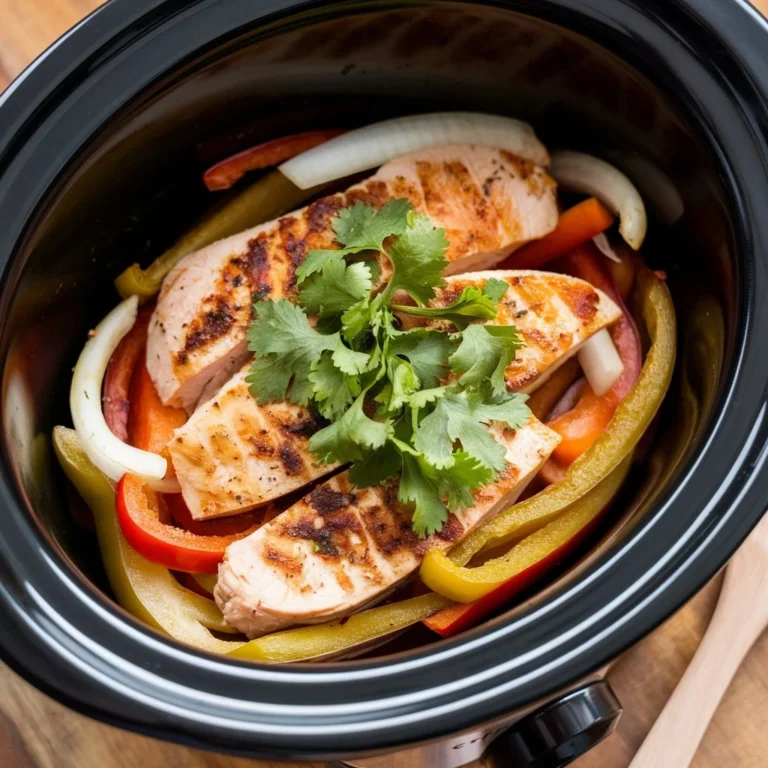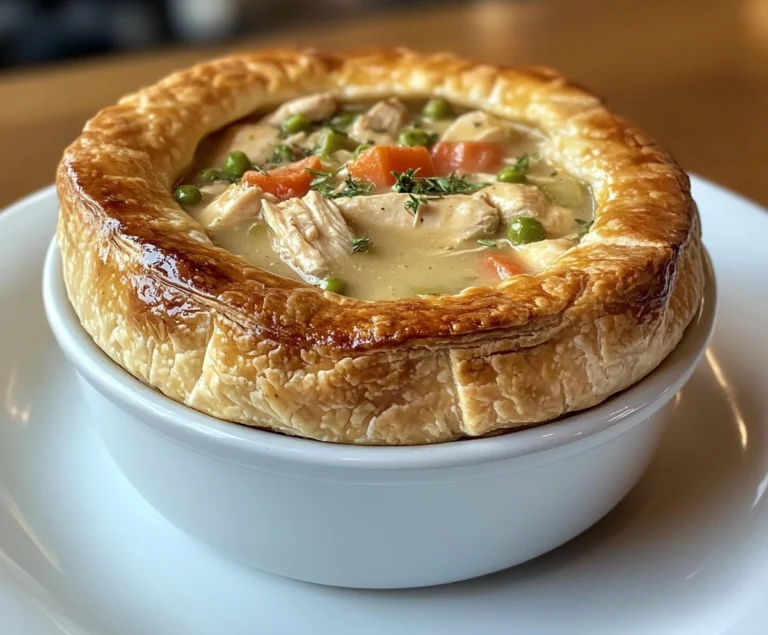Should You Drain Hamburger Meat for Soup? Find Out
Table of Contents
Winter evenings are perfect for a warm bowl of hamburger soup. I watched my grandmother make her famous soup. She always made sure the ground beef’s fat was just right for the best taste.
When making hamburger soup, it’s key to know how to handle the ground beef. Do you drain hamburger meat for soup? It depends on the ground beef’s fat. Chefs say 90% lean ground beef is best for a balanced flavor without too much grease.
If your ground beef is less lean, you should drain the fat. The taste and texture of your soup depend on how you handle the broth and fat.
Key Takeaways
- Choose 90% lean ground beef for optimal soup flavor
- Drain fat from ground beef with less than 90% lean content
- Manage ground beef broth carefully for best results
- Fat content significantly impacts soup texture
- Proper beef preparation ensures a delicious soup
Understanding the Basics of Hamburger Soup
Hamburger soup is a hearty and delicious meal. It turns simple ingredients into a comforting dish. This classic recipe combines lean meat, vegetables, and rich beef stock. It makes a satisfying simmer soup that feeds a crowd.
This soup is special because it’s versatile and easy to make. You can add different vegetables and seasonings. Yet, it still stays delicious at its core.
What Makes Hamburger Soup Unique
A great hamburger soup has a robust flavor and is nutritious. It includes:
- 2.5 pounds of lean ground beef
- 7 different vegetables for maximum nutrition
- 3 cups of rich beef stock
- 3 tablespoons of tomato paste for depth
Essential Ingredients for Perfect Hamburger Soup
For the perfect hamburger soup, choose your ingredients carefully. Start with high-quality lean meat and flavorful beef stock. Your vegetable mix should include:
- Onions
- Celery
- Garlic
- Bell peppers
- Carrots
- Red potatoes
- Whole tomatoes
The Role of Ground Beef in Soup Making
Ground beef is the protein powerhouse in your soup. When browning the meat, drain excess fat. This keeps your simmer soup lighter and more nutritious. Choose lean ground beef for the best flavor and health benefits.
Simmering your soup for 15-20 minutes blends the flavors perfectly. It creates a delicious and satisfying meal for about 12 people.
Do you drain hamburger meat for soup?
Deciding to drain hamburger meat for soup depends on a few key things. Fat rendering is key for rich flavor and texture. How you prepare the meat greatly affects the taste and health of your soup.
Here are some tips for handling ground beef in soup:
- Use 93% lean ground beef to minimize excessive fat
- Brown meat completely for 5-7 minutes
- Drain fat if meat contains more than 10% fat content
The best ground beef ratio for flavor is 80/20 or 85/15. Keeping some fat makes it taste better, but too much makes it greasy. Chefs say it’s all about balancing the fat for the right taste.
| Beef Fat Percentage | Drainage Recommendation | Flavor Impact |
|---|---|---|
| 80/20 | Partial Drainage | Rich, Robust Flavor |
| 93/7 | Minimal Drainage | Leaner, Less Intense |
Success in your soup comes from knowing about fat rendering and meat prep. Try different ground beef ratios to find your favorite taste.
The Benefits of Draining vs Not Draining Ground Beef
When making hamburger soup, choosing to drain ground beef’s fat is key. It affects the soup’s taste, texture, and health value. Your cooking method shapes the final dish.
Knowing how to handle ground beef fat is crucial. It helps you pick the right ingredients and prepare the beef stock.
Impact on Flavor and Texture
Fat is essential for rich flavors in soup. Draining it makes the dish leaner but might lessen the taste. Here are some points to consider:
- Lean ground beef cooks with less fat
- Keeping some fat can boost the soup’s flavor
- Removing all fat might make the soup less tasty
Health Considerations When Draining Fat
Your health goals should influence fat draining. Nutritional facts offer valuable insights:
| Beef Type | Fat Content | Calories per Serving |
|---|---|---|
| Regular Ground Beef | 20-25% | 494 |
| Lean Ground Beef | 10-15% | 400-450 |
Tips for Proper Fat Draining Techniques
Here are expert tips to balance flavor and fat:
- Drain excess fat with a colander
- Pat dry the meat with paper towels
- Choose leaner ground beef options
- Skim fat off the surface while cooking
“The secret to perfect soup lies in balancing flavor and nutrition” – Professional Chef
With these tips, you can make a tasty hamburger soup that’s also healthy.
Best Practices for Preparing Ground Beef for Soup
Mastering meat preparation is key to making a tasty hamburger soup. Choosing the right lean meat and knowing how to brown it can make your soup stand out.
When getting ready ground beef for soup, picking the right meat mix is vital. Experts say an 80/20 ground beef mix is best. It has enough fat for flavor but keeps the soup from getting too oily.
- Select 80/20 ground beef for best results
- Brown meat thoroughly before adding to soup
- Season ground beef with appropriate spices
- Drain excess fat to control soup consistency
To simmer soup perfectly, follow these seasoning guidelines for your ground beef:
- Use 0.5 teaspoons of onion powder
- Add 0.5 teaspoons of garlic powder
- Sprinkle 0.25 teaspoons of paprika
- Season with salt and pepper to taste
“The secret to a great hamburger soup is in the details of meat preparation.” – Culinary Chef
To get the best results, brown your ground beef over medium-high heat until it’s fully cooked. This step adds deep flavors and ensures the meat is safe to eat. Then, drain off any extra fat to keep the soup’s consistency right and lower the calories.
Pro tip: When using lean meat, avoid overcooking. It can make the beef dry and tough. Instead, simmer it gently to keep it tender and juicy.
How to Achieve the Perfect Soup Consistency
Making the perfect hamburger soup is all about balancing flavors and textures. Your ground beef broth is the base for a delicious meal. It will warm up any dinner table.
Getting the right soup consistency is key. Liquid ratios are crucial for rich flavors and the perfect texture. When you simmer soup, these ratios matter a lot.
Mastering Liquid Proportions
To make an amazing hamburger soup, follow these steps for liquid ratios:
- Start with 5 ½ cups of reduced sodium beef broth as your base
- Add 1 can (15 oz) of tomato sauce for more depth
- Include 1 can (14.5 oz) of fire-roasted diced tomatoes with juices
Fine-Tuning Soup Ingredients and Thickness
If your soup needs tweaking, you have a few ways to adjust its consistency:
- Make a cornstarch slurry: Mix 2 tablespoons cornstarch with ¼ cup cold broth
- Slowly add the slurry while stirring to avoid lumps
- Simmer for 5-10 more minutes to thicken
Pro tip: For a thinner soup, add more beef broth. For a thicker soup, simmer uncovered to reduce liquid and intensify flavors.
Seasoning for Perfect Flavor Balance
Boost your soup with a mix of spices:
- Use 2 teaspoons chili powder
- Add 1 teaspoon each of ground cumin and salt
- Include ½ teaspoon each of dried herbs (basil, parsley, oregano)
- Use ¼ teaspoon black pepper
Remember, patience and careful seasoning are key to a great hamburger soup. Let it simmer slowly to bring out rich, complex flavors that will impress your taste buds.
Adding Vegetables and Additional Ingredients

Creating the perfect hamburger soup starts with the right ingredients. Your beef stock is the base for a rich, hearty meal. It will make your taste buds happy.
- Carrots: Add sweet flavor and vibrant color
- Potatoes: Provide hearty texture and substance
- Celery: Contribute a subtle aromatic base
- Tomatoes: Enhance overall depth of flavor
Timing is key when simmering your soup. Add root veggies like carrots and potatoes early. They need to get tender. Add softer veggies like green beans or peas in the last 10-15 minutes to avoid overcooking.
Pro tip: Frozen mixed veggies are a great addition. They mix peas, carrots, corn, and green beans into your soup easily.
The key to a delicious soup is balancing flavors and textures through careful ingredient selection.
For more flavor, try these ingredients:
- 1 tablespoon Worcestershire sauce
- 1 tablespoon red wine vinegar
- 1 teaspoon dried Italian seasoning
- ½ teaspoon creole seasoning
Make your hamburger soup versatile by trying different veggies and seasonings. Each addition adds its own special touch to this comforting dish.
Storage and Reheating Tips for Hamburger Soup
Keeping your homemade hamburger soup fresh is key. It’s important to store and reheat it right. This way, you’ll keep its great taste and health benefits.
Refrigeration Best Practices
- Cool the soup completely before storing
- Use airtight containers to preserve freshness
- Store in the refrigerator for up to 3 days
- Keep soup ingredients separated if possible
Freezing Your Hamburger Soup
Freezing is a great way to keep your soup fresh for longer. Here are some tips for freezing:
- Use freezer-safe containers or heavy-duty freezer bags
- Leave about 1 inch of space for expansion
- Freeze for up to 3 months
- Label containers with the date of preparation
Reheating Guidelines
Here’s how to reheat your soup:
- Microwave: Heat in 1-minute increments, stirring between intervals
- Stovetop: Warm on medium-low heat, stirring occasionally
- Add a splash of beef stock if the soup seems too thick
- Ensure internal temperature reaches 165°F for food safety
“Proper storage and reheating can make your hamburger soup taste just as delicious as the day you made it!” – Culinary Experts
How you store and reheat your soup matters a lot. Follow these tips to enjoy a tasty meal every time.
Time-Saving Tips and Variations

Making a tasty hamburger soup doesn’t have to take a lot of time. With some clever meat preparation tips, you can whip up a quick and fulfilling meal. It’s perfect for those with busy schedules.
Here are some quick ways to prepare your hamburger soup:
- Prep ingredients ahead and keep them in the fridge
- Use pre-chopped veggies to cut down cooking time
- Try slow cooker or pressure cooker for easy cooking
- Make big batches and freeze them for later
Choosing different cooking methods can really change your soup:
| Cooking Method | Time | Flavor Intensity |
|---|---|---|
| Stovetop | 45 minutes | Medium |
| Slow Cooker | 4-6 hours | High |
| Pressure Cooker | 20-30 minutes | Intense |
Try these creative twists to keep your hamburger soup fresh:
- Use ground turkey instead of beef for a leaner soup
- Add pasta for a heartier soup
- Try different beans for unique flavors
- Use seasonal veggies for new tastes
Pro tip: Many people find that hamburger soup tastes even better the next day. It’s great for meal prep and busy weeknights.
Conclusion
Deciding to drain hamburger meat for soup depends on your cooking goals. Learning to manage excess fat can make your beef stock amazing. It’s all about finding the right balance between taste and health.
Draining fat isn’t just about cutting calories. It’s about making your soup perfect in texture and taste. Try different ways of preparing ground beef to find what you like best. Whether you drain the meat or keep some fat, it’s up to you.
Cooking is all about adapting. Ground beef has about 78 grams of protein and 91 grams of fat per pound. Your cooking skills can adjust these amounts while keeping the flavor great. Experiment, listen to your taste, and enjoy making your ideal hamburger soup.
Now you’re ready to make soups that are both healthy and tasty. Your cooking adventure is just starting. Keep trying new things, keep cooking, and most importantly, enjoy the journey of making soups.
FAQ
Do I need to drain hamburger meat when making soup?
Whether to drain hamburger meat depends on the meat’s fat content and your taste. For lean ground beef (90% lean or higher), you usually don’t need to drain it. But for fattier ground beef, draining some fat can prevent the soup from being too greasy.
How does fat content affect the flavor of hamburger soup?
Fat adds to the soup’s rich flavor but too much makes it greasy. Ground beef with moderate fat (80/20 blend) enhances flavor and keeps the meat tender.
What’s the best way to drain fat from ground beef?
Use a colander or slotted spoon to remove excess fat after browning. You can also blot the meat with paper towels or tilt the pan to let fat drain before adding other ingredients.
Can I use ground beef broth in my soup?
Yes! The fat and drippings from browned ground beef make a flavorful soup base. Skim off the top layer of fat after cooling slightly if you’re worried about fat.
What type of ground beef is best for soup?
Opt for ground beef with 80/20 or 85/15 fat content for the best flavor and texture. Leaner meats can dry out, while fattier cuts add richness.
How long should I simmer ground beef in soup?
Simmer ground beef in soup for 15-30 minutes to meld flavors and tenderize the meat. Avoid overcooking to prevent toughness and dryness.
Can I prepare ground beef for soup ahead of time?
Absolutely! Brown the ground beef in advance and store it in the fridge for 3-4 days or freeze for up to 3 months. This makes soup prep easier.
How do I reduce excess fat without losing flavor?
Try partial draining or use leaner ground beef. Blot excess fat with paper towels or use a fat separator to keep flavorful meat juices.
Source Links
- Hamburger Soup – https://www.dinneratthezoo.com/hamburger-soup/
- Hamburger Soup – https://www.spendwithpennies.com/hamburger-soup/
- Everyone Will Run to the Dinner Table for Ree’s Hamburger Soup – https://www.thepioneerwoman.com/food-cooking/recipes/a11374/hamburger-soup/







